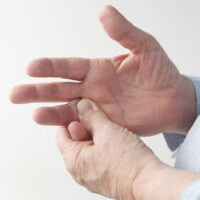8 common mistakes people make when using ovens

An oven is an integral part of a kitchen. Whether cooking full-blown meals, comfort food, or pre-packaged microwavable foods, the oven ensures the job is done easily and swiftly. Like all kitchen appliances, the oven also requires occasional maintenance. However, people make several mistakes while preparing food in the oven or cleaning the appliance, which can affect its efficiency and shelf life. Here are some mistakes one should avoid.
1. Relying heavily on the self-cleaning feature
Many ovens come with a self-cleaning that makes the cleansing process convenient. However, one must not rely on the feature regularly, as it isn’t a substitute for regular cleaning. It may also not work on ovens that are extensively used. One should always refer to the manufacturer’s instruction manual before using the self-cleaning feature or cleaning the oven.
2. Failing to install surge protectors
Thunderstorms or lightning strikes are major risk factors to an electric oven’s operation. One could have a surge protector plugged in during the oven installation to protect it from extreme weather or excess voltage.
3. Overloading the oven
While time might be of the essence when preparing multiple meal courses, one should not cook too many things simultaneously. Doing so reduces the overall performance and increases the risk of appliance fires. Alternatively, one should stagger cooking times and keep food items warm on the stovetop by covering them with a lid or foil.
4. Spraying knobs with cleaners
Another mistake people usually make is cleaning the control knobs with a household cleaner. They should avoid this as the liquid may get behind the knobs and switches and short out the control panel. Instead of directly cleaning the control knobs, one can spray some liquid cleaner onto a rag and rub the controls to prevent shorting.
5. Overlooking rust on the racks
An exposed rust coating on an oven rack may cause damage to baking dishes. Rust chips may also increase the chance of racks catching fire. One could clean rust stains with a nonabrasive scouring pad and soapy water and vinegar. The process may help soften rusty flakes and prolong the life of the oven rack.
6. Placing foil on the bottom of the oven
Placing foil on the bottom of the oven could make cleaning easier. However, it can block airflow and interfere with the heating elements, which may cause it to fail and require recalibration. An ideal method would be to wipe the interior regularly with a wipe-down and damp washcloth to keep its interior clean.
7. Neglecting to clean the appliance
Many people don’t clean their ovens for years at end. This results in a buildup of dirt that may prevent the oven’s heat sources from properly warming the oven. Moreover, the blockade may cause the oven to work harder than it should, even rendering undercooked food. Therefore, one must never put off cleaning the oven to ensure it functions without hiccups for years.
8. Failing to treat the door with care
Aggressively scrubbing the oven’s glass door can compromise its structure. Moreover, slamming the door can result in minor cracks and dents, eventually leading to shattered glass. Individuals must clean the oven with a soft sponge to remove grime and be gentle when dealing with the appliance.





